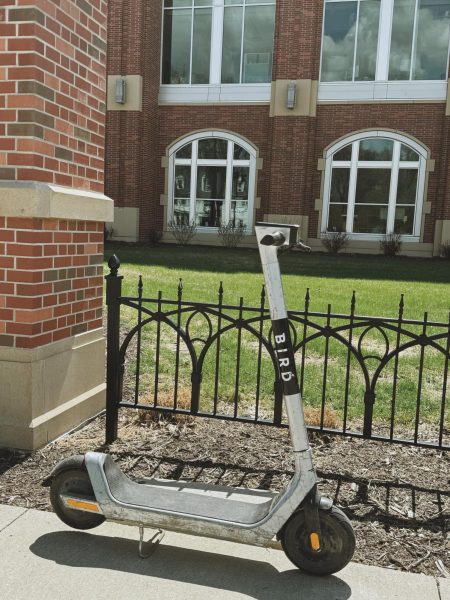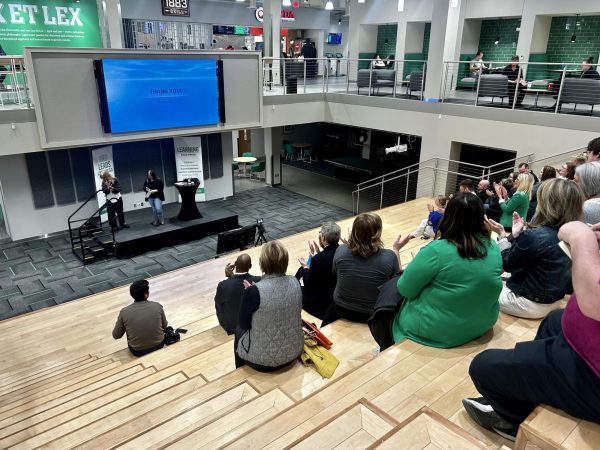Nutrition lab researches obesity, disease
Researchers use high-tech equipment to measure metabolism, body composition
Researcher James Roemmich observes Joley Beeler during testing at the Human Nutrition Research Center. Photo by Jennifer Friese/The Dakota Student.
When it comes to food the Grand Forks Human Nutrition Research Center has it down to a science. The Center is a part of the United States Department of Agriculture and its mission is to conduct basic and applied research addressing the prevention of obesity and related diseases.
Supervisory Research Physiologist and Research Leader James Roemmich said the research center has continuing and new research studies occurring to answer questions about how diets and physical activity help to maintain health and a healthy body weight with new and advanced equipment for the research.
“One of the things we study or focus on is satiety,” Roemmich said. “Satiety is the feeling of being full.”
Roemmich said they look into how long people stay full or how fast they feel hungry again after eating different foods.
“We have two metabolic kitchens, and these kitchens are designed to prepare either single meals or meals for a week or months on end,” Roemmich said. “Each meal can differ in energy or macronutrient compositions — fats, carbohydrates and proteins.”
The researchers also use equipment to measure other parts of the body and specific levels in the body.
“We are interested in another study here and a lot of the staff here has a height-adjustable desk which allows a person to sit or stand when they are working at the desk,” Roemmich said.
Roemmich explained the desks were designed to burn more calories in a day. For employees with a desk jobs, adjustable desk allows them to be active, choose to sit or stand and burn more calories.
“If you are standing, but not yet use to standing while working, it may cause you to fidget, which also burns more calories,” Roemmich said. “Standing behavior actually has more health benefits (than sitting).”
The applied physiology lab is a separate lab that contains gadgets to measure physical activity and body composition.
“A lot of things we want to measure are body composition,” Roemmich said. “There are a lot of factors to body composition — fat that you see on the surface, but also fat that is located deeper inside our abdomen.”
The dual energy x-ray absorptiometry — DEXA — provides a scan of the human body.
“It not only measures fat, but you get lean tissue and bone scans as well,” Roemmich said. “That is important, because the bones could be an endpoint — bone density leads to osteoporosis. If you are interested in how a certain food or physical activity affects the bones, then this machine will tell us just that.”
The Bod Pod is an egg- shaped instrument similar to the DEXA. Roemmich said it also measures body composition by using a technique called air displacement plethysmography.
“Basically, you are comparing your body’s mass and volume inside the pod versus when no air is being used in the pod,” Roemmich said. “What we are trying to get is body density, which gives us body fat percentage and also lean tissue.”
Similar to the instruments in the applied physiology lab is the room calorimeter, which is new to the nutrition lab. According to Roemmich, it has not been used for any research studies, but they are excited to have it because there are few in the United States.
“A room calorimeter allows energy to be measured by air samples,” Roemmich said. “You can even reside in here for several days. It is made to be a more livable situation.”
The nutrition lab even has smaller instruments that can be easily carried around to measure a person’s physical activity. Roemmich said there are Wii consoles that can be used for more of a fun type of exercise.
“You know, exercise doesn’t just have to be exercise. It can be fun,” Roemmich said.
Misti Meads is a staff writer for The Dakota Student. She can be reached at [email protected].

















